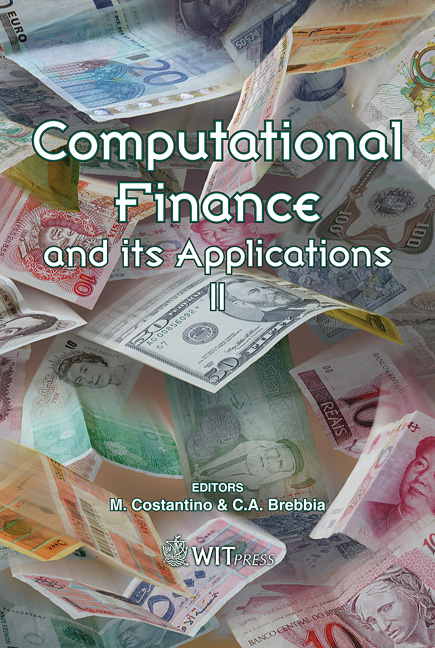The Use Of Quadratic Filter For The Estimation Of Time-varying β
Price
Free (open access)
Transaction
Volume
43
Pages
10
Published
2006
Size
584 kb
Paper DOI
10.2495/CF060211
Copyright
WIT Press
Author(s)
M. Gastaldi, A. Germani & A. Nardecchia
Abstract
The beta parameter is used in finance to estimate systematic risk and usually it is assumed to be time invariant. The literature shows that there is now considerable evidence that beta risk is not constant over time. The aim of this paper is the estimation of time-varying Italian industry parameter betas using a new approach based on the Kalman filter technique and on polynomial estimates. This approach is applied to returns of the Italian market over the period 1991-2001. Keywords: time-varying beta, additive non-Gaussian noise, Kalman filter. 1 Introduction The market effect on the returns of single assets is one of the most investigated arguments in finance. The Capital Asset Pricing Model (CAPM) suggests that the market effect is due to the relationship between the asset returns and the market portfolio returns. Moreover, the asset sensibility to the variations of the market portfolio returns produces the single asset expected returns. Parameter β measures the asset sensibility to the variations on the market returns [1]. In the classical financial analysis, parameter β is assumed to be time invariant and returns have a Gaussian distribution [2], but there is considerable general evidence that these assumptions are invalid in several financial markets as US markets [3] and Australia [4]. During the first 1970’s researchers saw the first applications of the Kalman filter to the estimation of the systematic risk [5,6]. The proposed model for β was the Random Walk Model [7] requiring the estimation of the unknown variances. Many researchers investigated the validity of the CAPM in presence of
Keywords
time-varying beta, additive non-Gaussian noise, Kalman filter.





